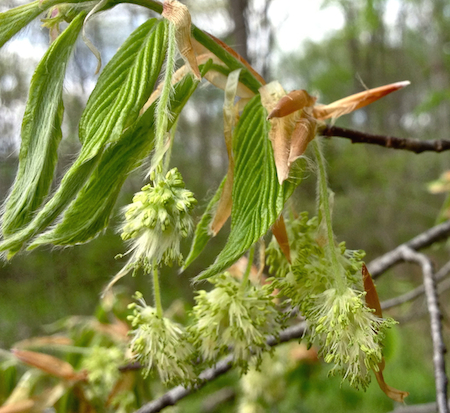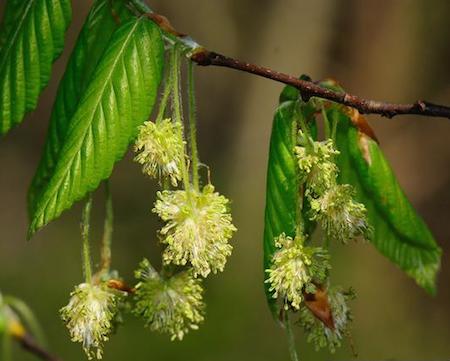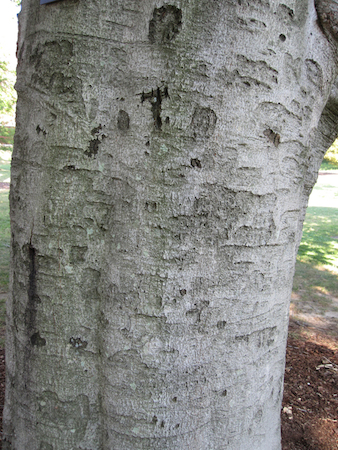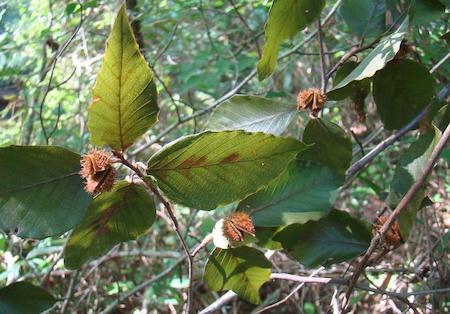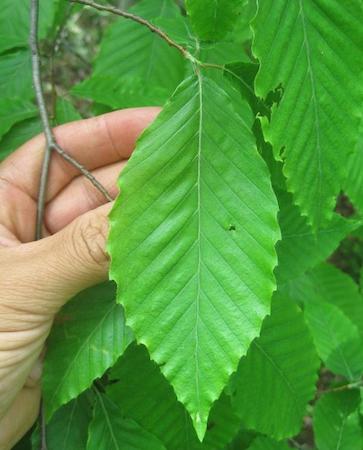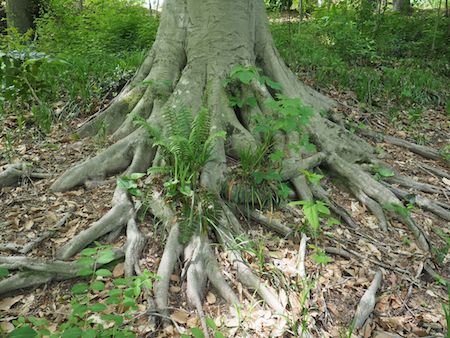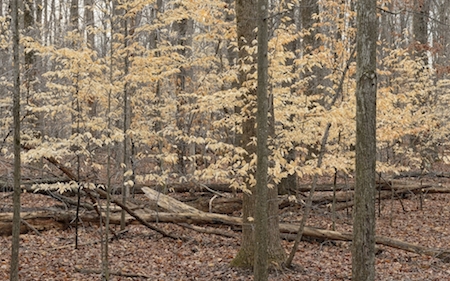Beech
Specifications
- Also known as: American Beech
- Latin (scientific) name: Fagus grandifolia. Fagus is from the Greek word meaning to eat, referring to the edible beechnuts; Grandifloria is Latin for large leaf.
- Life expectancy: 350 years
- Height: 121.7 feet
- Circumference: 149 inches
-
The height and circumference measurements listed above are for the largest-known American beech tree in Georgia. This state champion tree is located in Lullwater Conservation Park at Emory University.
-
Special characteristics:
This is a majestic tree that is royal through all the seasons. The bark is what really shows off the tree. It is smooth, pale gray, and looks like elephant hide. The gentle curves of the wrinkle lines make one pause and look deeper at the tree. During winter months, the bark shines in the forest when compared to the darker trunks of other trees.
The architecture of the beech is all that you could want in a tree. It has a full rounded form with no sharp edges.
The bark on the beech tree is very thin. Many people cut into it with inscriptions that stay forever. Some people find the inscriptions interesting, while others see them as ugly and disfiguring.
When you hire a tree service to work in this tree, make sure the climbers never wear leg spikes, and always use a “branch saver” to keep their rope from rubbing on the sensitive thin bark. Without it, the weight of a rope moving over a bare branch will quickly wound the tree and leave a visible scar on it. It’s best not to have any pruning done in spring because this is when the bark is more prone to damage. Just a turn of a boot on the bark can tear away tissue and create a wound.
-
Fun Facts:
The American beech is a “climax forest” species: it makes its appearance after hundreds if not thousands of years after occupation by "lesser" species like pine and oaks. This tree is an indicator of rich soil, which led to much of its demise as settlers chopped it down to make way for agriculture.
The leaves of the beech stay on the tree during winter. Their light brown color adds interest and beauty to a forest scene. The tree drops its leaves just before it buds out in the Spring.
The nut on this tree is an important food to wildlife. Bears, squirrels, and birds eat the seeds. Settlers used to eat the nuts. Ever heard of Beechnut chewing gum? It's a brand many of us older folks remember.
-
Photo Credits:
Bark: Bruce Kirchoff, University of North Carolina at Greensboro, Vanderbilt University Bioimages
Leaves: Rob Routledge, Sault College, Bugwood.org
Flowers(1): Fritz Flohr Reynolds, Wikimedia Commons
Flowers(2): Vern Wilkins, Indiana University, Bugwood.org
Seeds: Rob Routledge, Sault College, Bugwood.org
Roots: Peter Jenkins, TreeInspection.com
Winter Trees: jimclarkphoto.wordpress.com

